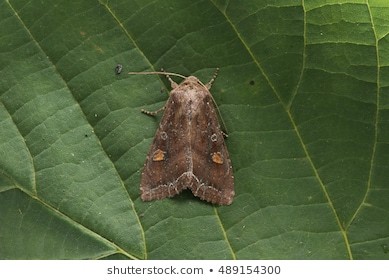Scarce brindle,
(Apamea lateritia)

Description
Apamea lateritia, the scarce brindle, is a moth of the family Noctuidae. It is found in much of the Palearctic. It is a sporadic migrant in Great Britain, where it is recorded from the east and south-east coasts. P.lateritia Hufn. Forewing dull purplish redbrown, darker towards the costa; costal area and veins sprinkled with white scales; inner and outer lines double, lunulate-dentate, the teeth marked dark and light on the veins; claviform stigma absent; orbicular and reniform dark red brown with incomplete white annuli, the orbicular generally obscure and without white outline; submarginal line indistinct; the terminal area, except at apex, rather darker; hindwing fuscous, greyer towards base, with the cell spot and veins dark; — ab. borealis Strand, from Lapland, is still darker brown; — ab. derufata ab. nov. (39 i) is pale purplish red, without the dark redbrown tinge; — the form expallescens Stgr. (39 i),from Turkestan and Tibet, is pale reddish ochreous, flushed with brown or grey brown, the terminal area always dark brown; — ab. festiva ab. nov. (40 a), from Transcaucasia, rather smaller than expallescens, is pale brickred, somewhat roughly scaled; lastly, ab. sordida ab. nov. (40 a), a decidedly smaller form, is dirty brownish fuscous, with the inner and outer lines well-marked and approximated on inner margin; of this a fairly long series, all males is in the Tring Museum, from Pescocostanzo, Italy. Larva dull dark grey; the head brown; the thoracic and anal plates black. The wingspan is about 42–50 mm. Adults are on wing from June to August. The larvae feed on the roots of grasses.
Taxonomic tree:







